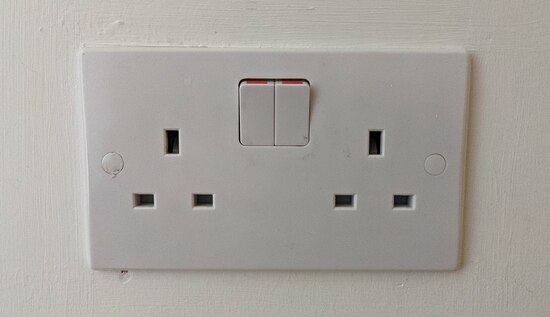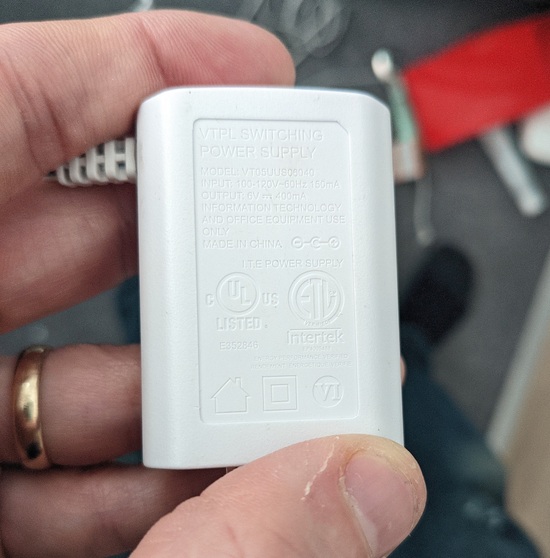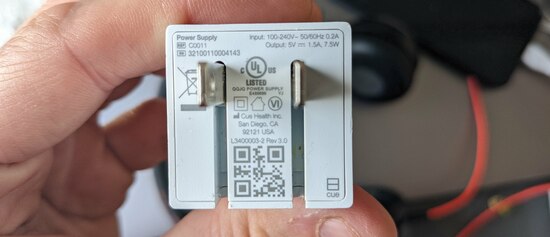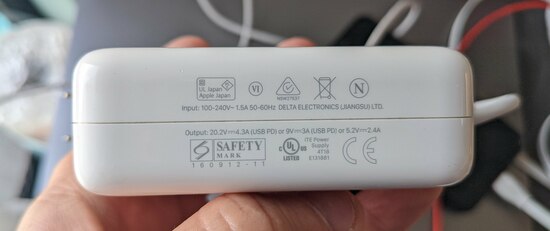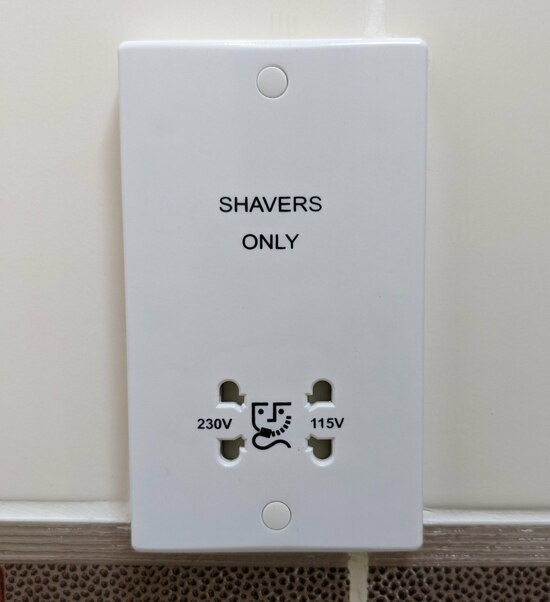When Can You Use a Travel Adapter? |
April 21st, 2022 |
| power, travel |
Since we're from the US, none of the gear we have will plug into these sockets. What if we use a travel adapter?
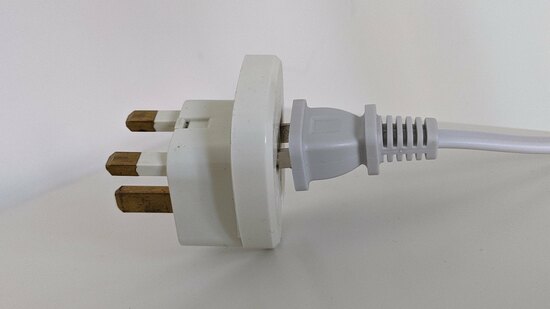
plug intentionally partially inserted to show pins
This accepts the pins from a US plug, and connects them directly to pins shaped for a UK socket. Is this enough? Sometimes yes, sometimes no.
The big difference between residential power in the UK and the US is that the UK uses 230V while the US uses 120V. If a device that expects 120V gets 230V it might get fried; the other way around is less likely to destroy the device but still won't work. Luckily, devices say what voltages they accept. Either they'll be labeled for a single voltage, or a range. Some examples, with whether they'll work in the UK:
A good heuristic is that most external power supplies/chargers (for laptops, phones, tablets, ...) will take a wide range of voltages while most other things (nightlights, blenders, TVs, fans, ...) will be either 120V or 230V. But best to check your specific device!
In bathrooms you may find one other type of outlet:
These exist because you'd risk electrocution with a regular outlet in a wet area like a bathroom. In the US we'd use a GFCI, but in the UK they use isolation transformers. Because it's a transformer, it's cheap to add a center tap and get half the input voltage (115V). They generally do not produce much power: UK ones are only rated for 200mA (4.6W) and if you draw much more than that you'll trip a built-in fuse. If you do have a small US device and no adapter, don't mind connecting it in a bathroom, and the device says it draws less than 200mA/4.6W and doesn't have strong frequency preferences (it will be 50Hz instead of 60Hz) you could probably use it for something other than a shaver.
Comment via: facebook, lesswrong, substack
